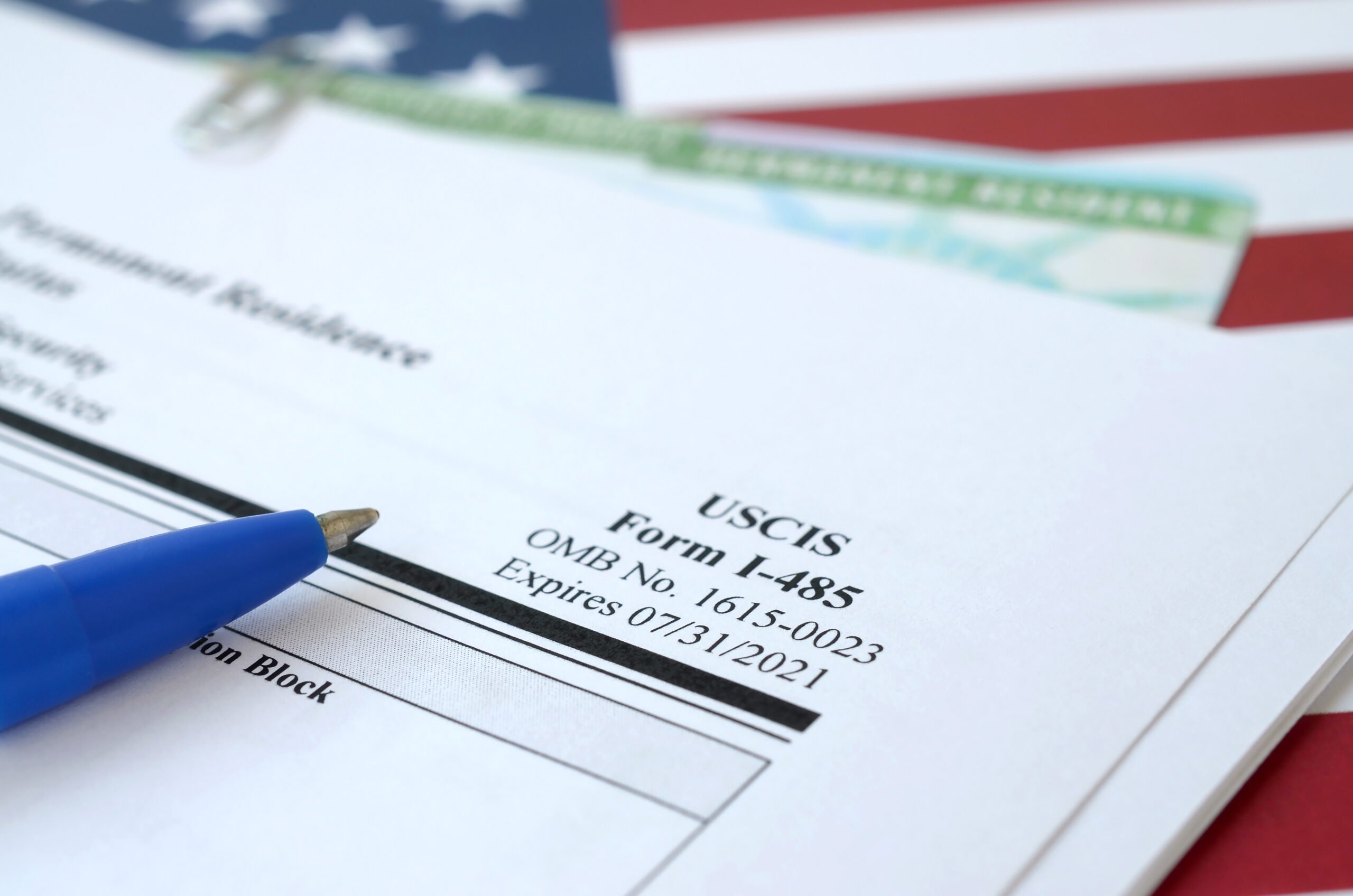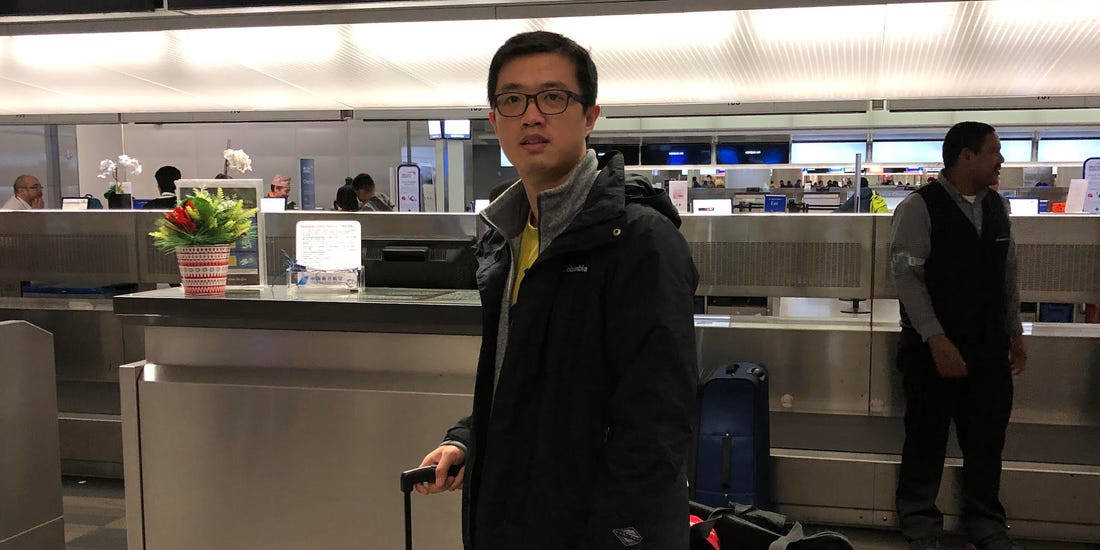Permanent residence status in the United States may be a common goal for those individuals who have been living or working in the country for a longer period of time, and are wondering how to obtain a permanent immigration status. However, the process and conditions required to obtain it may not be clear due to a large number of factors to consider and requisites needed.
This article is structured with the aim of easily clarify the path toward a successful adjustment of status, as well as to guide possible candidates to discover whether they fulfill the needed requirements.
What is Adjustment of Status and I-485?
Adjustment of Status (AOS) is the process that foreign nationals can use to obtain lawful permanent resident status if they are in the United States. The Form I-485 is officially called the “Adjustment of Status Application” and is the official green card application. In other words, it is an essential document that has to be submitted at the time of starting a green card application process. Obtaining AOS requires you to meet specific and strict conditions and steps to follow that will be further analyzed and explained in this article.
Am I eligible for Adjustment of Status and permanent residence?
First of all, it is important to clarify that you need to be lawfully admitted to the United States to apply for AOS. Lawful immigration status is a primary requirement to obtain a positive outcome in the application process. This means that you have not overstayed your U.S. visa for more than 180 days, that you have not worked without autorhorization, and that you have not violated other immigration rules. Then, you need to be eligible for a specific green card type. Green cards may be issued for family-based, employment-based, or other specific reasons:
- You may consider a family-based (FB) application if you are the spouse, child, parent, or a close relative of a US citizen or green card holder;
- Also, you can apply for an employment-based (EB) green card in case your employer agrees to sponsor you, or if you are able to demonstrate your high-qualified accomplishments and abilities;
- Finally, you may consider humanitarian green cards or for other reasons, which you may find here.
You may check the following points in order to determine whether you are eligible for AOS.
General criteria:
- To be physically present in the United States;
If you are not in the country, you may evaluate applying for a Consular Processing (check Where can I apply from? section);
- To have entered the United States on a valid visa;
- To be in lawful status.
Specific criteria:
- You are on valid a K-1 Fiancé(e) Visa and you have married a US citizen;
- You have been granted asylum or refugee status at least one year ago;
- You’re eligible for adjustment of status under Section 245(i) of the Immigration and Nationality Act (INA) – the heart of U.S. immigration law. Regarding employment-based application, this means that you must prove your extraordinary ability in the sciences, arts, education, business, or athletics; be an outstanding professor or researcher; be a multinational executive or manager; be a professional, skilled worker; or be a special immigrant such as religious worker.
Where can I apply from?
The application for Lawful Permanent Resident (LPR) status may be started from the US or from abroad. However, in this last case, the process is called Consular Processing and it will be processed by a US consulate or Embassy. If in the US, the process takes the name of Adjustment of Status and it will not require you to go to your home country or abroad at any stage of the process.
How much does it cost?
When submitting an Adjustment of Status application, you need to pay and attach immigration fees. They may vary depending on your age and filing category and can be consulted in detail here. Usually, the filing fee for Form I-485 is $1225. USCIS currently has also a reduced fee of $750 for a child (under 14) if the child’s application is filed with the I-485 of at least one parent.
How can I apply for Adjustment of Status?
To successfully complete your AOS application, you should consider the following steps:
- Step 1: File a petition
Depending on the green card type, your sponsor (spouse, relative, employer…) has to file a petition for you. This may be through Form I-130 (Petition for Alien Relative) in case of family-based petitions, Form I-140 (Petition for Alien Workers) for employment-based green cards, Form I-730 (Refugee/Asylee Relative Petition) in case of humanitarian motivations. The applicant may also self-petition in limited cases if applying for an employment-based green card.
- Step 2: File Form I-485
Once the petition form is approved, you can proceed to the filing of Form I-485. You may need to add additional forms in some specific cases.If you intend to work in the US while your application is being processed, you have to add Form I-765 (Application for Employment Authorization) together with Form I-485 to get work authorization. If you plan to travel abroad before your green card is issued, you have to add Form I-131 (Application for Travel Document) to apply for an Advance Parole travel authorization.
- Step 3: Biometrics
After submitting your Form I-485 application, the U.S. Citizenship and Immigration Services (USCIS) will arrange an appointment in which you will share your biometric information, such as your photos, fingerprints, and signature.
- Step 4: Interview
USCIS will likely ask you to attend an interview. If it happens so, you will be asked to discuss some unclear information regarding your application or any supporting documents you have submitted. The aim of the interview is to verify important information about the applicant to determine eligibility for adjustment. Important: For green cards based on EB1-A, the applicant usually receives the green card within 3 to 6 months, without being interviewed so you may receive your green card before USCIS adjudicates the I-765 or I-131.
- Step 5: Results
Considering all the information you have provided, USCIS will decide whether to accept or reject your AOS application. If it is approved, your green card document will be delivered to you in a short period of time.
Consider the following points for your AOS process:
- You are authorized to stay in the United States while your application is being processed, even if your visa expires before receiving the results from USCIS.
- You not leave the United States until you receive a decision on your green card or travel permit, since an unpermitted foreign trip may indicate that you have abandoned your application. If you need to leave the US, you should file Form I-131 (Application for Travel Document) to apply for an Advance Parole travel authorization.
- The 90-day rules. If you entered the United States on a temporary visa (such as tourism, business, medical care, or education, among others), you are expected to stay in the country for that specific reason you declared. You should start your AOS application after 90 days have passed since you arrived in the U.S.
- In some cases, the applicant’s spouse and children may also adjust in the petition as derivatives, if eligible, based on their family relationship.
- All documentary evidence (for example, birth or marriage certificate) must be provided in English. If needed, you should attach a certified translation.
My application is approved
If your AOS application is accepted, your green card document will be delivered to you in a short period of time. Since this exciting moment, you can work and live across the United States, as well as travel abroad and be able to come back with no further petitions.
In case your petition was based on a fiancé(e) visa, you may receive a conditional green card for two years. This status aims to prove that your marriage was celebrated in good faith, and after two years since the approval, you will have to file Form I-751 (Petition to Remove Conditions on Residence) to obtain a permanent residence.
Additionally, you may consider becoming a US citizen after a period of time that varies between 3 and 5 years, depending on your green card type.
My application is denied
Firstly, if USCIS determines that your application has to be rejected, you will no longer be in lawful immigration status and you should therefore consider leaving the United States as soon as possible.
You may wonder why USCIS would deny your AOS application, and the answer may be more complex than you think.
Here, you may find some points you might want to consider in order to receive a successful response from USCIS:
- You need to be sure your forms are complete and correct. Entrust the application process to an attorney, may be the wisest decision;
- You need to be sure to include the correct filing fees for the application forms;
- You need to be sure that you are applying for the appropriate green card type for you;
- You need to provide sufficient information and supporting, relevant documentation;
USCIS gives the reasons for the denial in the decision letter mailed to the applicant. If your application is denied because of a missing signature or relatively minor needed corrections (crucial evidence), you can consider submitting a new application.
On the other side, if your application is denied because of insufficient criteria to consider you eligible for a green card, you should not apply again for AOS until you reach all the required requisites.
Conclusion
Permanent residence is undoubtedly a dreamt status for a large number of individuals who daily work and live in the United States, amid temporal residence conditions and limitations. Significantly, Adjustment of Status represents an important step toward a more stable and permanent lifestyle and recognition in the country and may be achieved through the analysis of the explained steps and considerations.
PassRight can help you to plan and gather the necessary documents. If you think you meet the requirements to apply for Adjustment of Status and feel willing to give the next step toward the aimed permanent residence, please contact us. We will evaluate your profile and explain to you how to prepare the strongest application possible.
FAQs
How long does it take for Form I-485 to get approved?
Processing times depend on the number of applications that USCIS receives, the category, and the Field Office or Service Center that received the application. For green cards based on EB1-A, the applicant usually receives the green card within 3 to 6 months, without being interviewed.Where can I check the status of my application?
You can check it here (link: https://egov.uscis.gov/casestatus/landing.do).Can I travel while form I-485 is pending?
As explained in the article, you should avoid leaving the U.S. while your Form I-485 is pending if you want your application to be approved. However, if you need to leave the country, you can file Form I-131 (Application for Travel Document) to apply for an Advance Parole travel authorization and legally leave the U.S.Can I work during the Adjustment of Status process?
As explained in the article, you can work while your Form I-485 is pending only if you have a valid work authorization. If you filed Form I-765 (Application for Employment Authorization) together with Form I-485 you will receive a work authorization after 6-8 months.Can you file Form I-485 online?
Online filing for Form I-485 is not available. You can check the corresponding filing address here (link: https://www.uscis.gov/forms/all-forms/direct-filing-addresses-for-form-i-485-application-to-register-permanent-residence-or-adjust-status).









